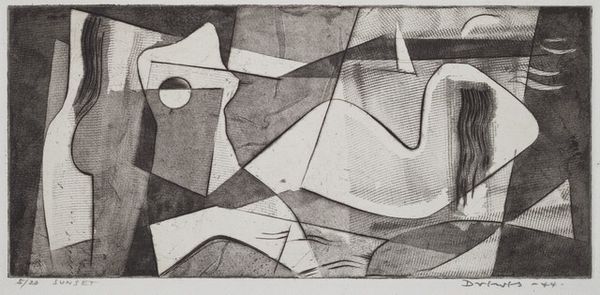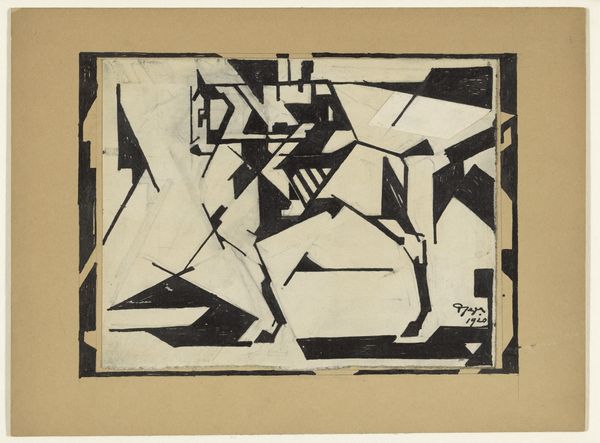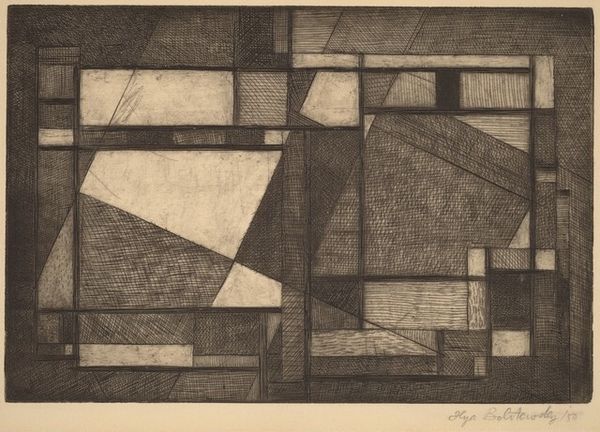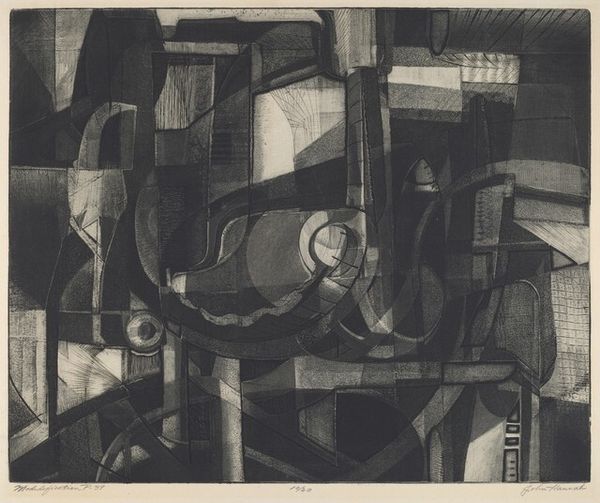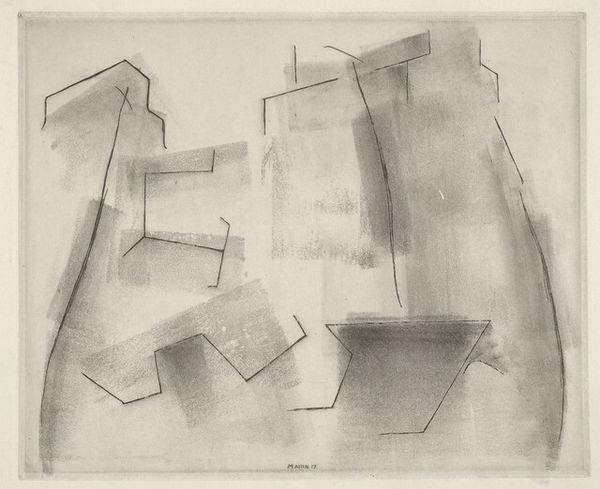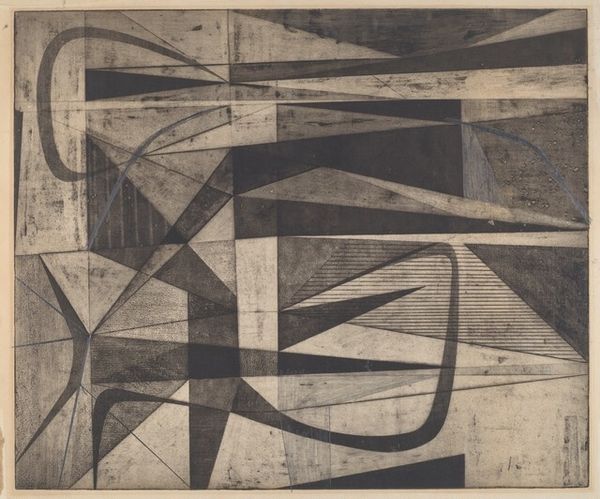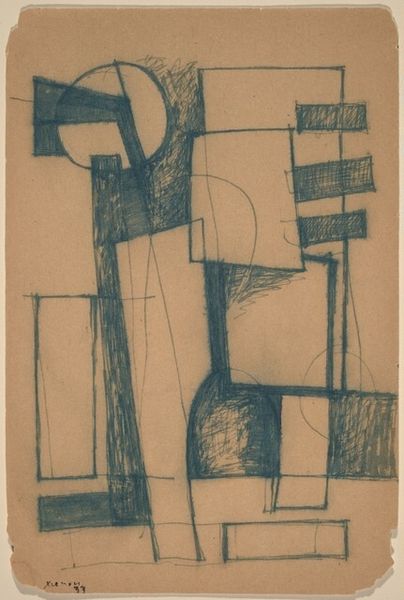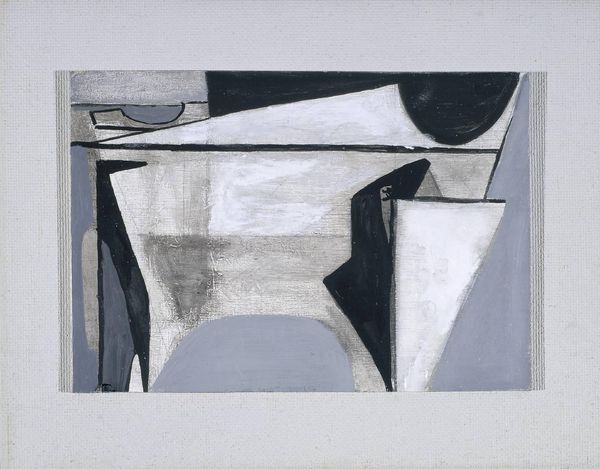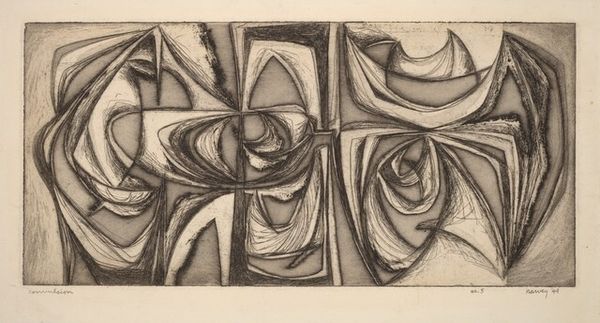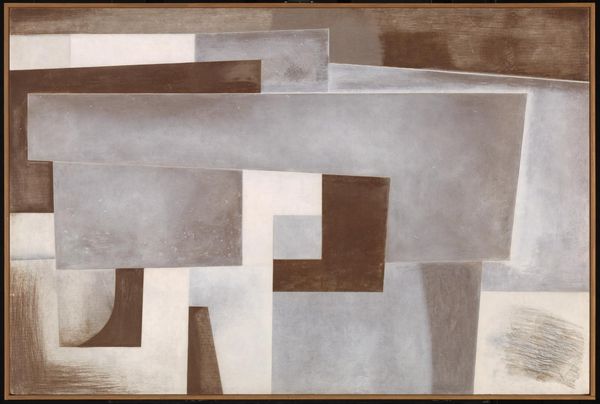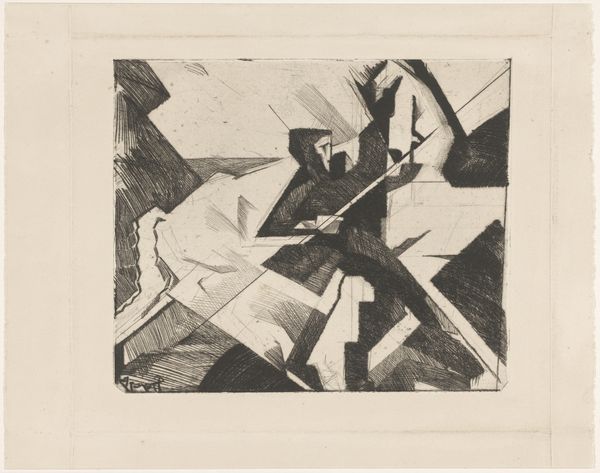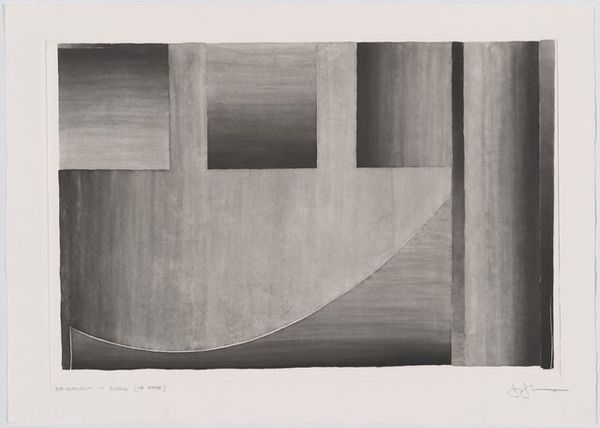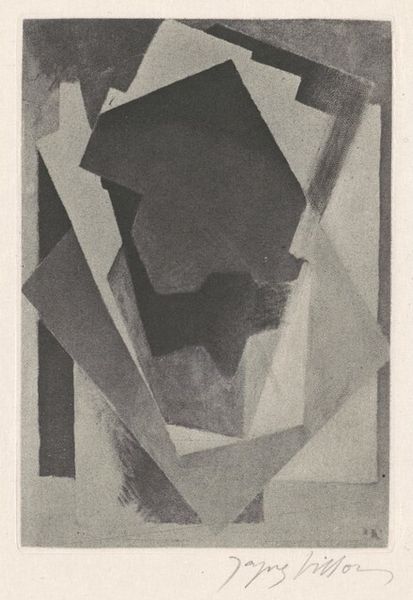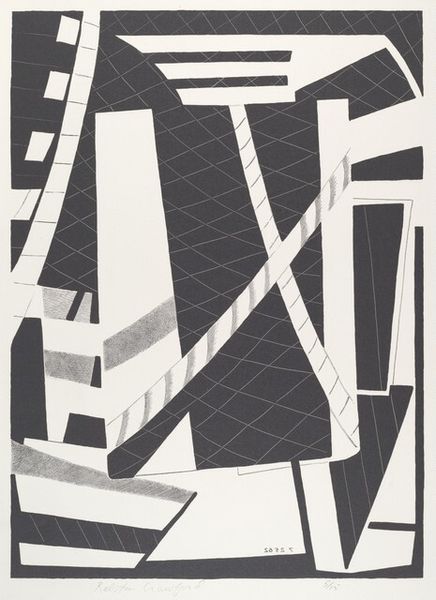
print, etching, graphite
# print
#
etching
#
constructivism
#
desaturated colour
#
geometric
#
abstraction
#
line
#
graphite
#
monochrome
Copyright: National Gallery of Art: CC0 1.0
Curator: Let's take a look at "Number 6. 0. 7.," a print by John Paul Jones. The work features a combination of etching and graphite on paper, rendering the piece in monochrome tones. Editor: My first thought? Structured chaos. The geometric forms feel meticulously planned, but their arrangement feels almost arbitrarily scattered and intersecting, leading to this sense of... controlled disorder, like looking into the inner workings of a fractured machine. Curator: Interesting take. Formalistically speaking, the stark lines dissect the surface, creating a dynamic interplay of planes and perspectives, doesn't it? Consider the strategic deployment of those lighter zones— they act almost as anchors, visually pulling the composition together amidst all those acute angles. Editor: But to what end? I mean, Jones was working during the mid-20th century when abstraction was grappling with questions of functionality versus pure aesthetics, and the rise of cold war tensions and technological progress were prominent. Is he dissecting space to mirror that era’s social fragmentation, or perhaps celebrating a bold future built on geometric precision? Curator: It might even be more direct than that. There’s a Constructivist influence evident here – the deliberate focus on line and form, attempting to purify and reduce imagery to its essential components. A visual equation in blacks, grays and whites. Editor: Still, I can't help but see echoes of wartime industry in this. Its harsh angles and mechanical vibe remind me of blueprints or assembly lines – a time when individual experience became standardized. The desaturated colour adds this stark layer that mutes individual flourishes, like everything's been stripped to utility. Curator: That interpretation does align with the piece's understated palette. However, I remain convinced the visual elements themselves, these abstracted angles, should be observed within themselves. Look closely and each plane creates tension between surface and depth, solidifying the autonomy of line and tone. Editor: Ultimately, the success of this piece is that it offers up endless points of reflection. Each line begs for attention. Each form forces the audience to reflect on its potential role within our larger socio-political sphere, even when it is rendered only in graphite and etching. Curator: I agree. John Paul Jones gives us this precise intersection that speaks volumes. It stays with you long after your first view.
Comments
No comments
Be the first to comment and join the conversation on the ultimate creative platform.
